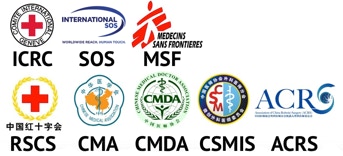

Doctors
Institutions
Conditions
Drugs
Insurances
TCM
Research
About Us
What is menorrhagia?
Menorrhagia is the most common type of abnormal uterine bleeding. It is characterized by heavy and prolonged menstrual bleeding. In some cases, bleeding may be so severe and relentless that daily activities become interrupted.
What causes menorrhagia?
There are several possible causes of menorrhagia, including the following:
Hormonal (particularly estrogen and progesterone) imbalance (especially seen in adolescents who are experiencing their first menstrual period. Also in women approaching menopause)
Pelvic inflammatory disease
Uterine fibroids
Abnormal pregnancy (such as miscarriage or ectopic)
Infection, tumors, or polyps in the pelvic cavity
Certain birth control devices (such as intrauterine devices or IUDs)
Bleeding or platelet disorders
High levels of prostaglandins. These are chemical substances that help to control the muscle contractions of the uterus.
High levels of endothelins. These are chemical substances that help the blood vessels in the body dilate.
Liver, kidney, or thyroid disease
What are the symptoms of menorrhagia?
In general, bleeding is considered excessive when a woman soaks through enough sanitary products (sanitary napkins or tampons) to need changing every hour. In addition, bleeding is considered prolonged when a woman experiences a menstrual period that lasts longer than 7 days. The following are the most common (other) symptoms of menorrhagia. However, each individual may experience symptoms differently. Symptoms may include:
Spotting or bleeding between menstrual periods
Spotting or bleeding during pregnancy
The symptoms of menorrhagia may resemble other menstrual conditions or medical problems. Always talk with your healthcare provider for a diagnosis.
How is menorrhagia diagnosed?
Diagnosis begins with a healthcare provider evaluating a woman’s medical history and a complete physical exam including a pelvic exam. A diagnosis of menorrhagia can only be certain when the healthcare provider rules out other menstrual disorders, medical conditions, or medicines that may be causing or aggravating the condition. Other diagnostic procedures for menorrhagia may include the following:
Blood tests
Pap test. A test that involves microscopic exam of cells collected from the cervix. A Pap test is used to find changes that may be cancerous or may lead to cancer, and to show noncancerous conditions. These include an infection or inflammation.
Ultrasound (also called sonography)
Biopsy (endometrial). A procedure in which tissue samples are removed (with a needle, pipette, brush, or during surgery) from the body to be examined under a microscope. It is also to determine if cancer or other abnormal cells are present. An endometrial biopsy removes tissue from the lining of the uterus.
Hysteroscopy. A visual exam of the canal of the cervix and the interior of the uterus using a viewing instrument (hysteroscope). The hysteroscope is inserted through the vagina.
Dilation and curettage (D & C). A common gynecological surgery. It consists of widening the cervical canal with a dilator and scraping the uterine cavity with a curette.
Treatment for menorrhagia
Specific treatment for menorrhagia will be discussed with you by your healthcare provider based on:
Your age, overall health, and medical history
Extent of the condition
Cause of the condition
Your tolerance for specific medicines, procedures, or therapies
Expectations for the course of the condition
Your opinion or preference
Treatment for menorrhagia may include:
Iron supplementation. This treatment is used if the condition is coupled with anemia. This is a blood disorder caused by a deficiency of red blood cells or hemoglobin.
Prostaglandin inhibitors. These are nonsteroidal anti-inflammatory medicines, including aspirin or ibuprofen. They help reduce cramping and the amount of blood expelled.
Oral contraceptives. These inhibit ovulation.
Progesterone. Hormone treatment.
Endometrial ablation. A procedure to destroy the lining of the uterus (endometrium).
Endometrial resection. A procedure to remove the lining of the uterus (endometrium).
Hysterectomy. A surgical removal of the uterus.















